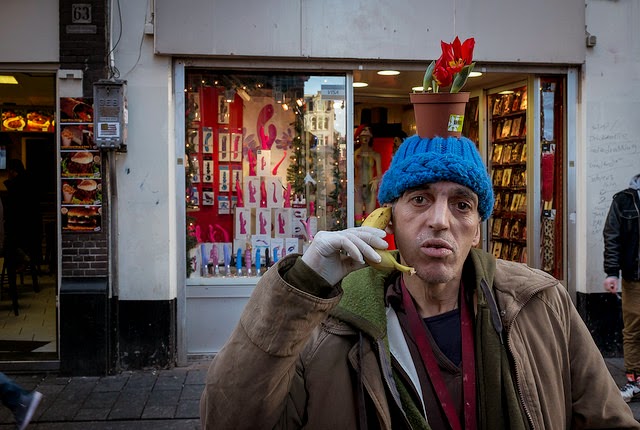This morning I sat down to write a post and all I could think about was the question: What makes a story a good story? Is it completely subjective or are there external measures of good and bad?
As I usually do when wrestling with a question, I investigated what other writers thought. In so doing I came upon this jewel of an article by Mark Twain: Fenimore Cooper's Literary Offenses.
It is an excellent article, written by an author at ... well, I won't say the height of his ability, Twain may have soared even higher at other times, but one thing is clear: that man could write. Whatever good writing is, whatever it consists in, this is that.
As Mark Twain execrates Fenimore Cooper he does something else: he spells out what he feels are the hallmarks of good writing. Or, more simply, of good art.
Mark Twain on what makes a story a good story.
Twain lists 18 things, 18 qualities, that separate good stories from their opposite. I'll list them and then make a few, general, observations.[1]
These rules require:
1. "That a tale shall accomplish something and arrive somewhere."
2. "They require that the episodes in a tale shall be necessary parts of the tale, and shall help to develop it."
3. "They require that the personages in a tale shall be alive, except in the case of corpses, and that always the reader shall be able to tell the corpses from the others."
4. "They require that the personages in a tale, both dead and alive, shall exhibit a sufficient excuse for being there."
5. "They require that when the personages of a tale deal in conversation, the talk shall sound like human talk, and talk such as human beings would be likely to talk in the given circumstances, and have a discoverable meaning, also a discoverable purpose, and a show of relevancy, and remain in the neighborhood of the subject at hand, and be interesting to the reader, and help out the tale, and stop when the people cannot think of anything more to say."
6. "They require that when the author describes the character of a personage in the tale, the conduct and conversation of that personage shall justify said description."
7. "They require that when a personage talks like an illustrated, gilt-edged, tree-calf, hand-tooled, seven- dollar Friendship's Offering in the beginning of a paragraph, he shall not talk like a negro minstrel in the end of it."
8. "They require that crass stupidities shall not be played upon the reader as 'the craft of the woodsman, the delicate art of the forest,' by either the author or the people in the tale."
9. "They require that the personages of a tale shall confine themselves to possibilities and let miracles alone; or, if they venture a miracle, the author must so plausibly set it forth as to make it look possible and reasonable."
10. "They require that the author shall make the reader feel a deep interest in the personages of his tale and in their fate; and that he shall make the reader love the good people in the tale and hate the bad ones."
11. "They require that the characters in a tale shall be so clearly defined that the reader can tell beforehand what each will do in a given emergency."
"In addition to these large rules, there are some little ones. These require that the author shall:
12. "Say what he is proposing to say, not merely come near it.
13. "Use the right word, not its second cousin.
14. "Eschew surplusage.
15. "Not omit necessary details.
16. "Avoid slovenliness of form.
17. "Use good grammar.
18. "Employ a simple and straightforward style."
Once more, those are from Mark Twain's article, Fenimore Cooper's Literary Offenses.
Here's how Twain sums up The Deerslayer's failings:
"A work of art? It has no invention; it has no order, system, sequence, or result; it has no lifelikeness, no thrill, no stir, no seeming of reality; its characters are confusedly drawn, and by their acts and words they prove that they are not the sort of people the author claims that they are; its humor is pathetic; its pathos is funny; its conversations are -- oh! indescribable; its love-scenes odious; its English a crime against the language."
Twain did not like that book.
But he does us a great service. He spells out exactly why he didn't like it, he takes great pains to tell us where, precisely, it fell short of greatness.
1. It was disordered.
A story must be structured even in the minimal sense that it has high points and low points. A story has characters who want things and who attempt to overcome obstacles to get them.
2. It had no sense of realism.
A completely made-up world can have a sense of realism. For instance, Tolkien's universe or George R.R. Martin's.
I'm currently trying NOT to read the latest book in Jim Butcher's Dresden Files series, Skin Game. (I'm trying not to read it because I would happily put everything in my life on hold so I could dive in and finish the story in one great gasp of reading.) Butcher consistently makes it seem normal and natural and even reasonable that there are things like witches and warlocks and wizards. His world feels real, even though it's not.
On the other hand, a story about a real event in a real place can feel artificial, fabricated.
Realism depends on getting the details right: how people move, how they respond to setbacks, natural dialogue, giving readers a sense of place, and so on.
3. Be precise.
Twain seemed to think that Cooper used words like an eight month old eats crackers: he had a lot of enthusiasm but his precision left something to be desired. When communicating your meaning, be precise. Use the right word, not approximately the right word.
Twain writes:
"Cooper's word-sense was singularly dull. When a person has a poor ear for music he will flat and sharp right along without knowing it. He keeps near the tune, but is not the tune. When a person has a poor ear for words, the result is a literary flatting and sharping; you perceive what he is intending to say, but you also perceive that he does not say it. This is Cooper. He was not a word-musician. His ear was satisfied with the approximate words. I will furnish some circumstantial evidence in support of this charge. My instances are gathered from half a dozen pages of the tale called "Deerslayer." He uses "Verbal" for "oral"; "precision" for "facility"; "phenomena" for "marvels"; "necessary" for "predetermined"; "unsophisticated" for "primitive"; [...] "eyes" for "sight"; "counteracting" for "opposing"; "funeral obsequies" for "obsequies.""
Twain's article is well worth reading in its entirety.
So, going back to my question at the beginning, What makes a story a good story:
A story should be ordered, it should have a sense of realism, and in writing it one should strive to use exactly the right word to express one's meaning.
Of course, a story can do all that and be horrible! (grin)
What do you think makes a story a good story?
Links/References
1. Twain writes: "There are nineteen rules governing literary art in domain of romantic fiction -- some say twenty-two. In "Deerslayer," Cooper violated eighteen of them."
These aren't all the rules Twain believed existed, these are just the ones Twain thought Cooper violated.
Photo credit: "sagebrush #1" by Greg Westfall under Creative Commons Attribution 2.0.










